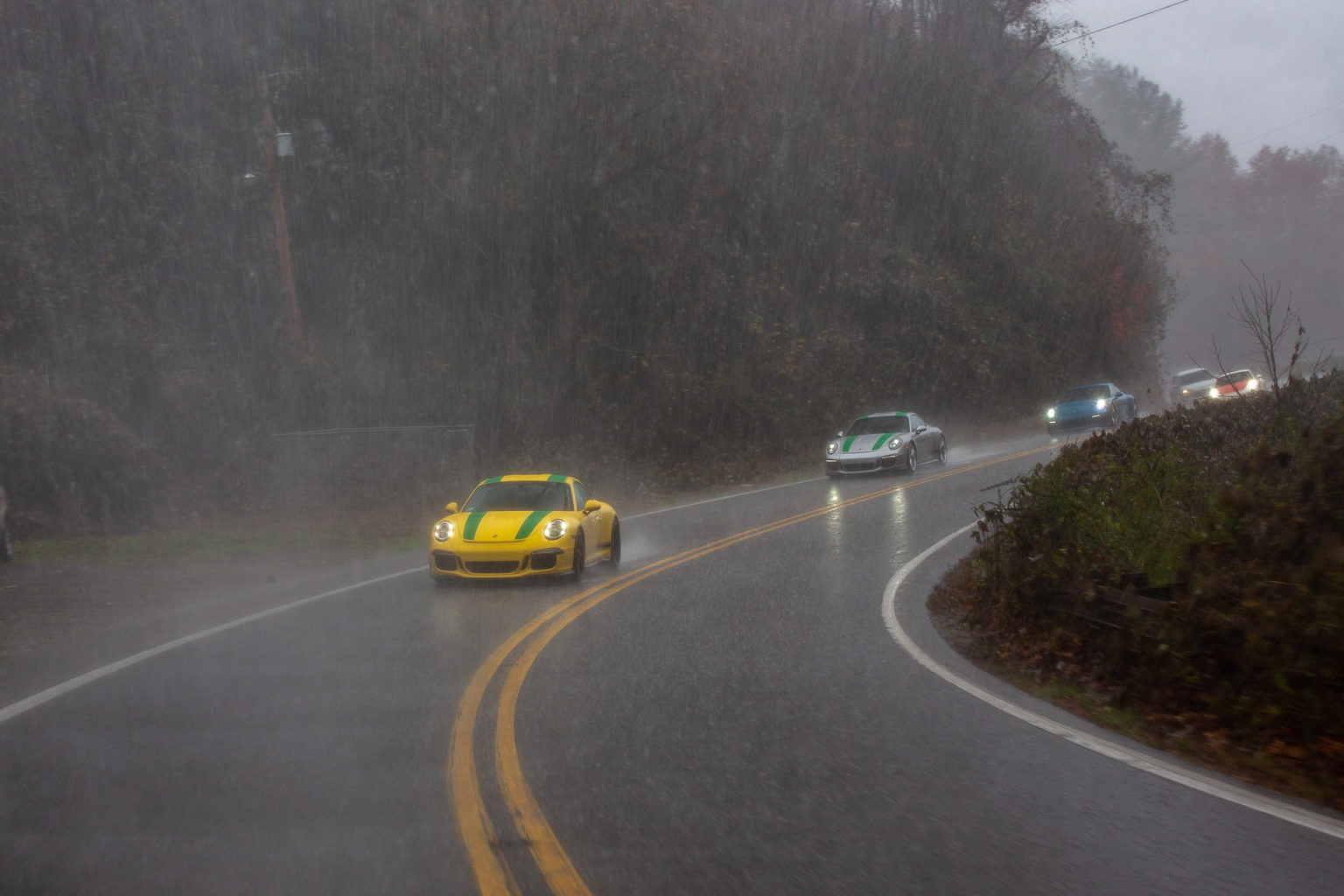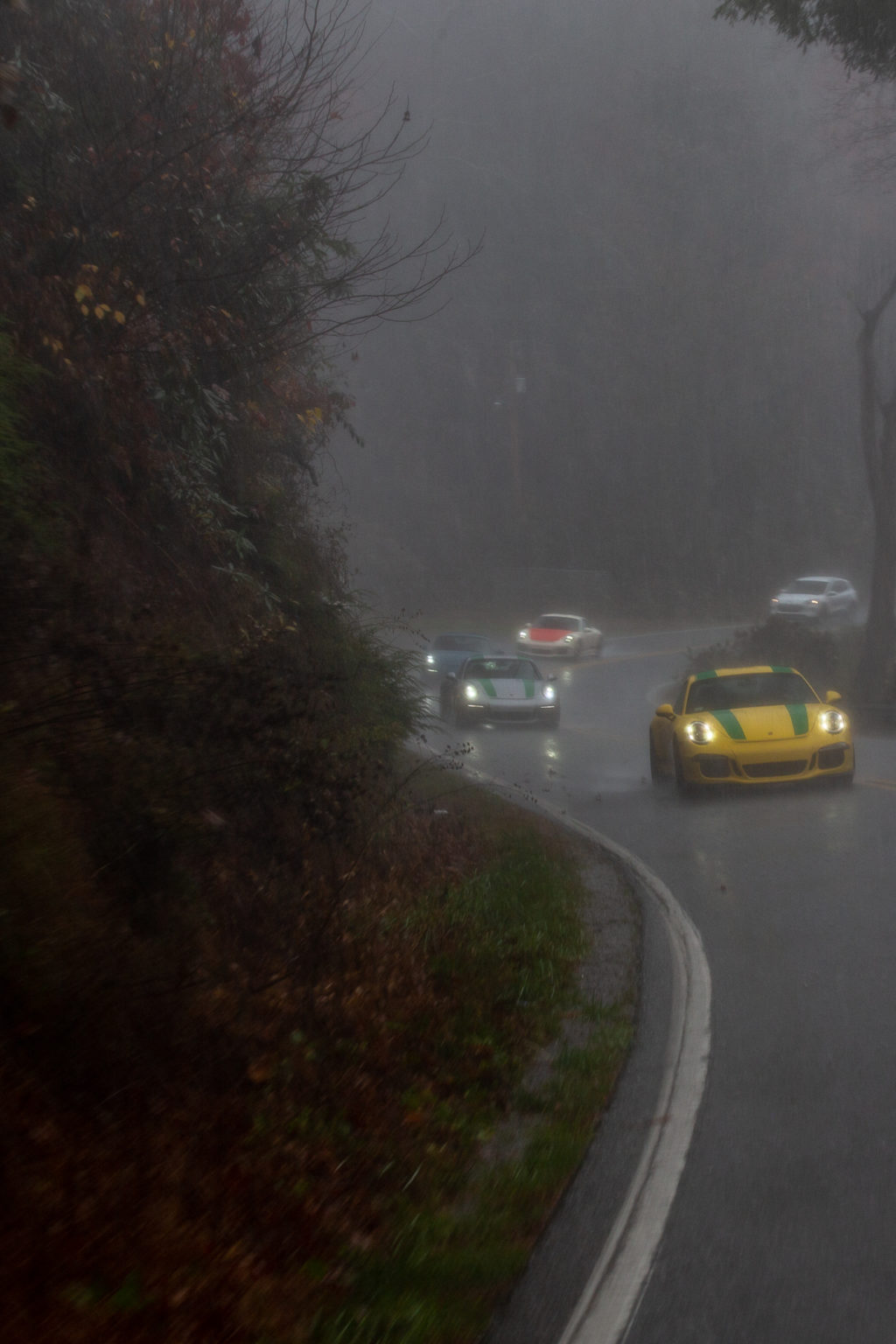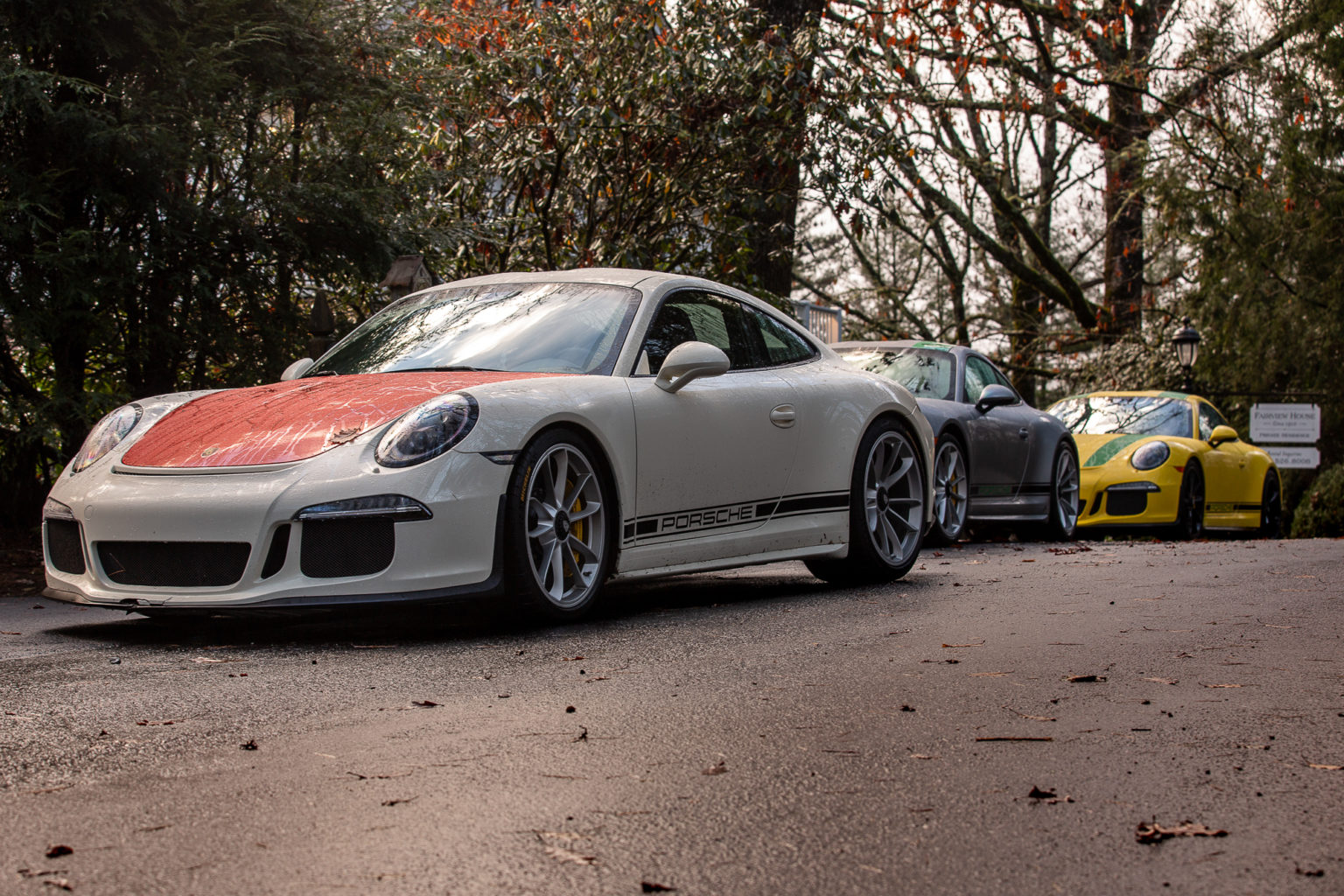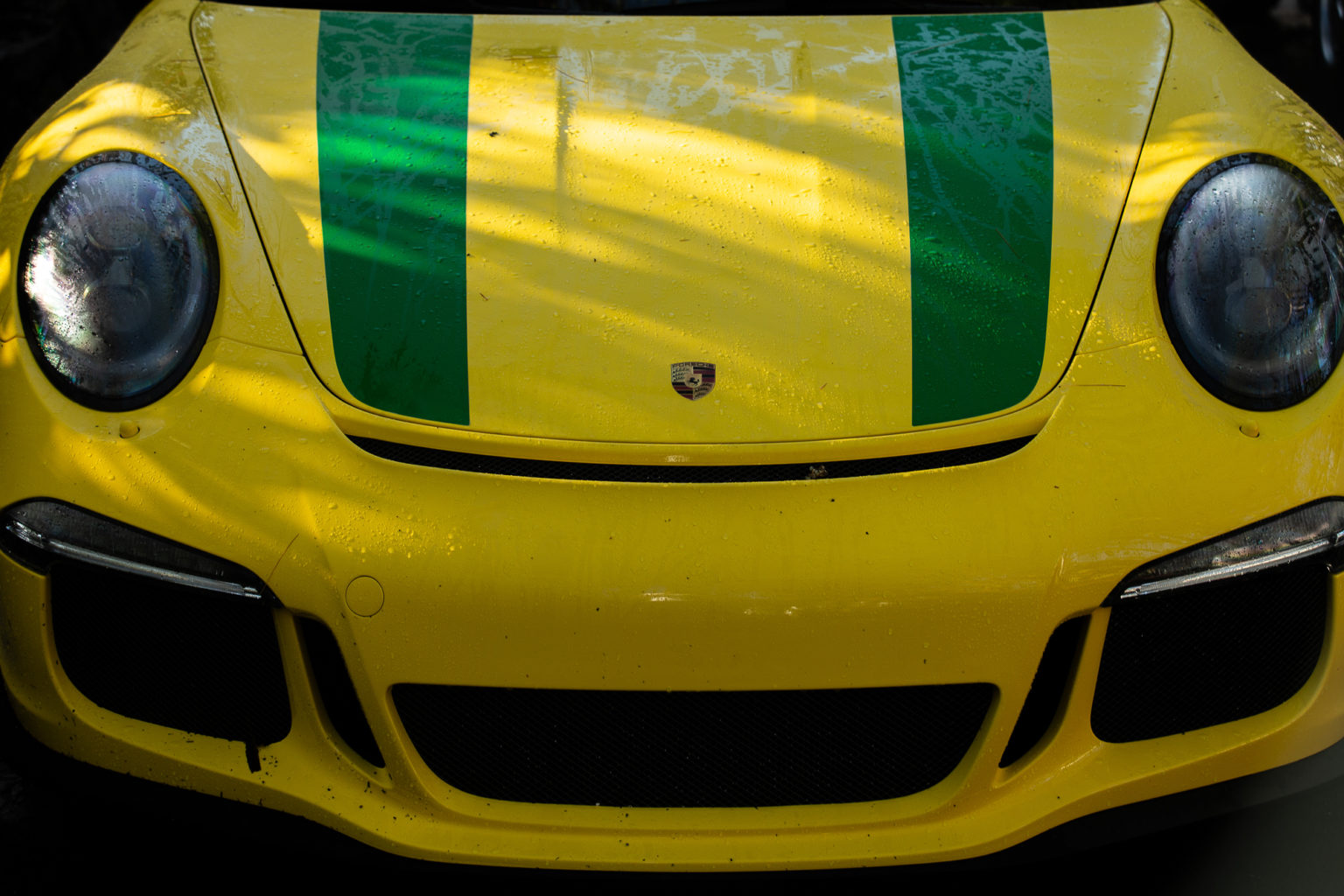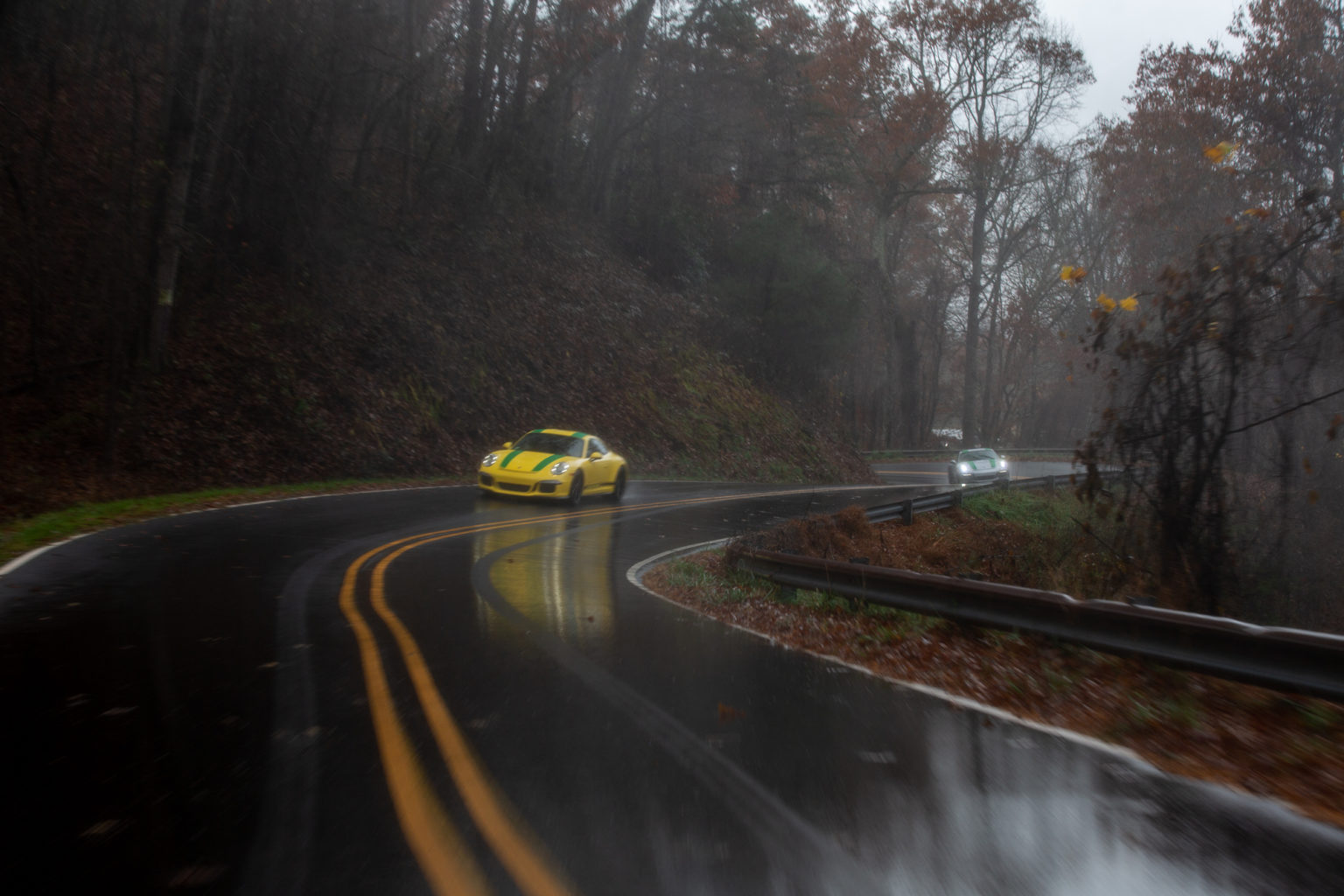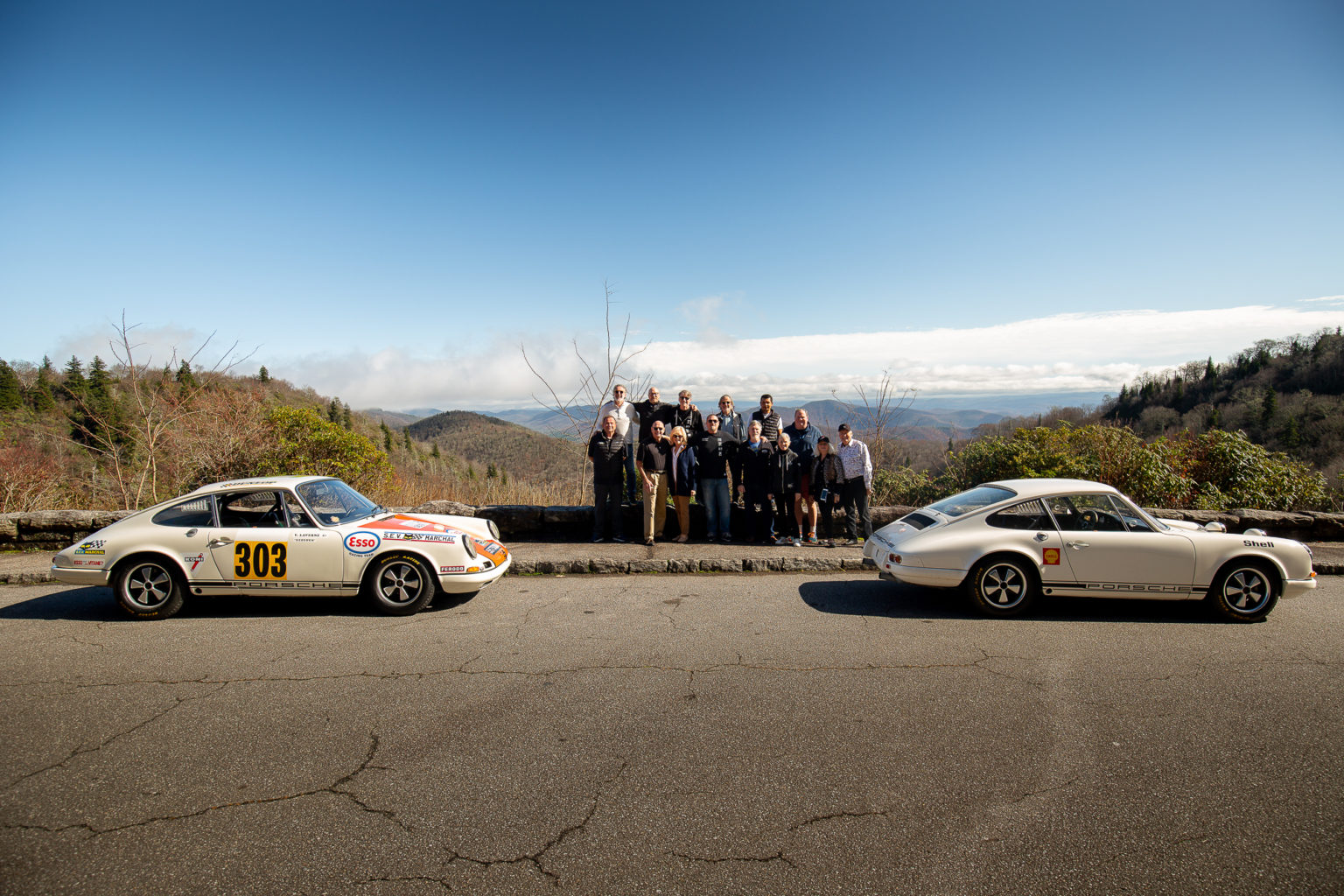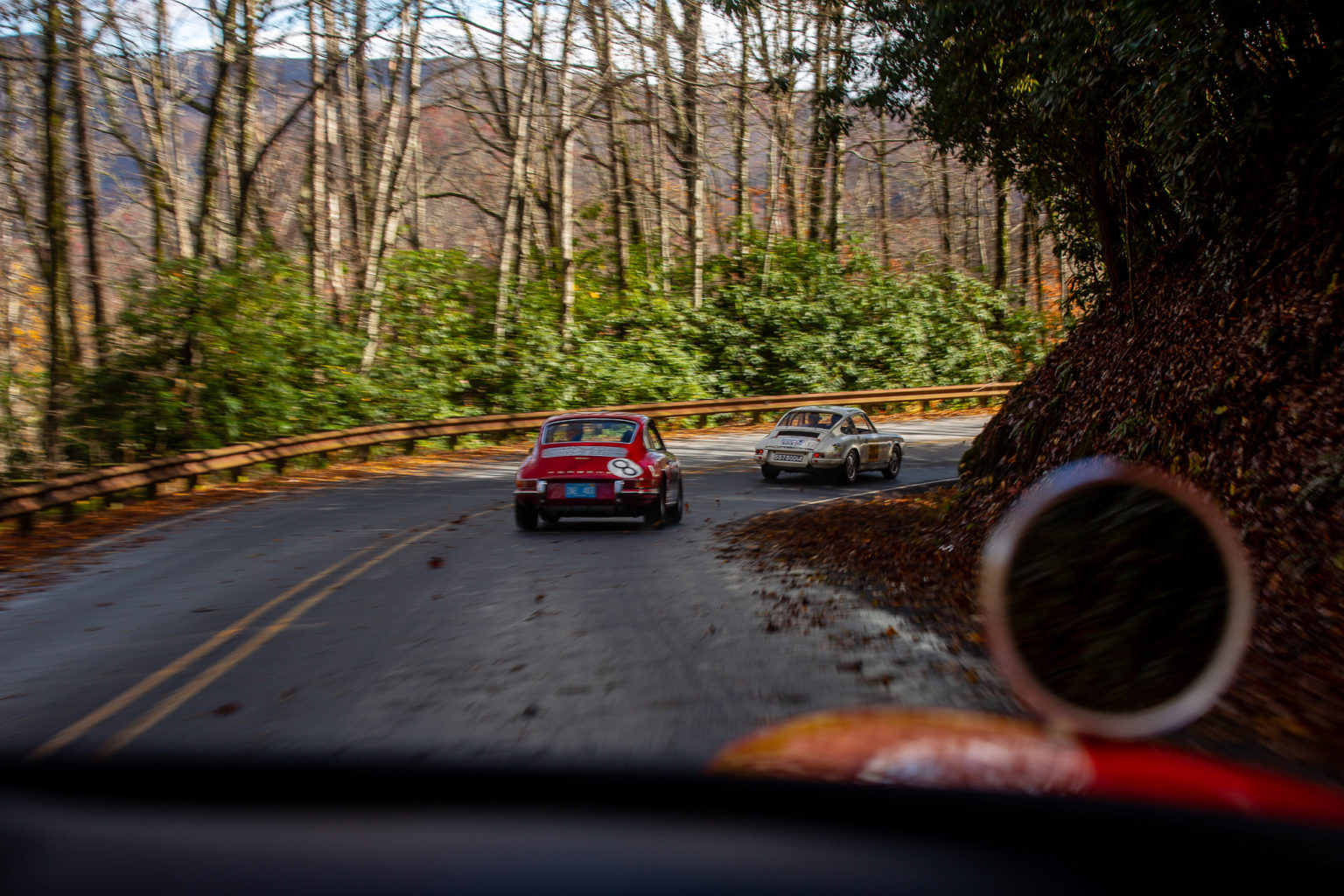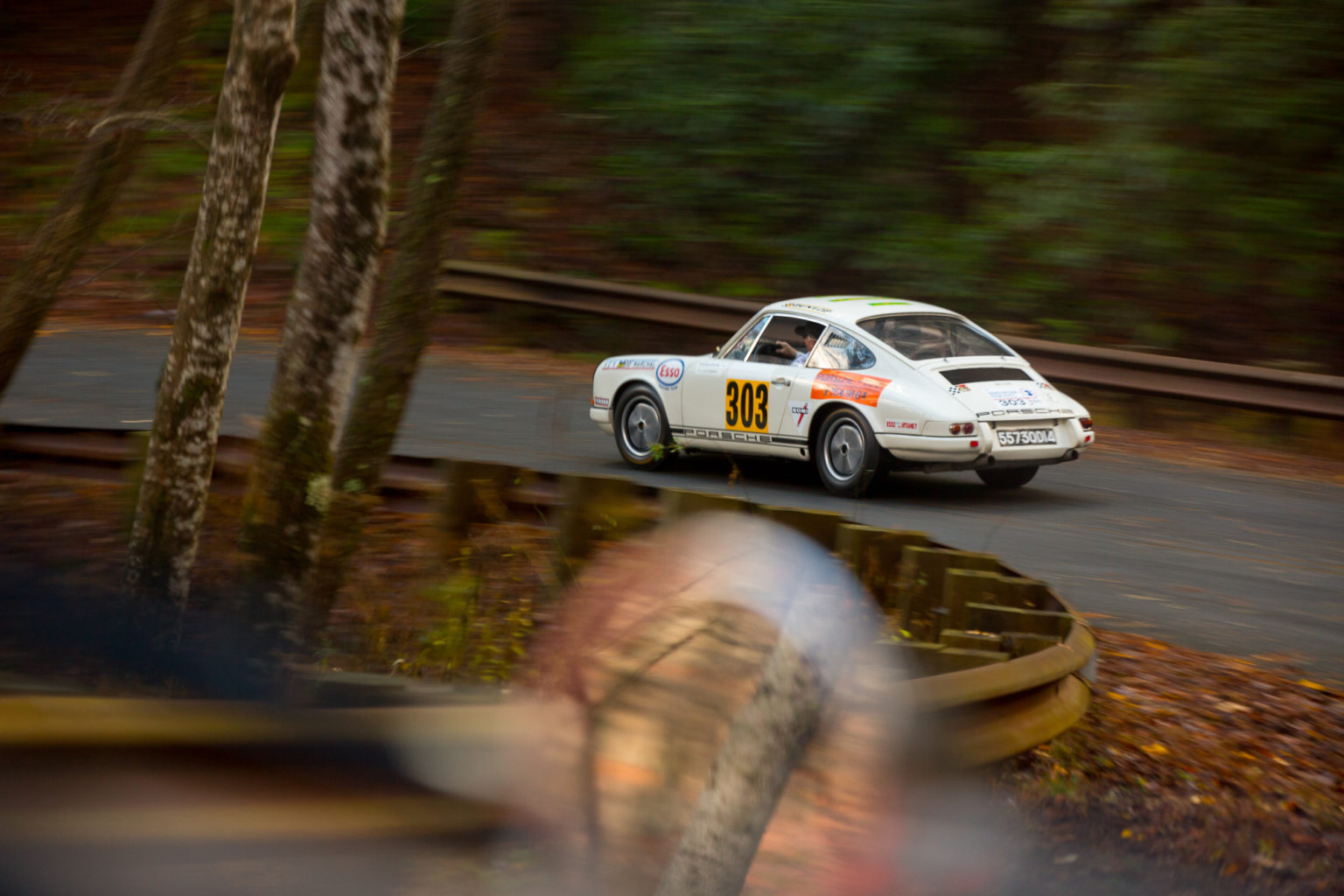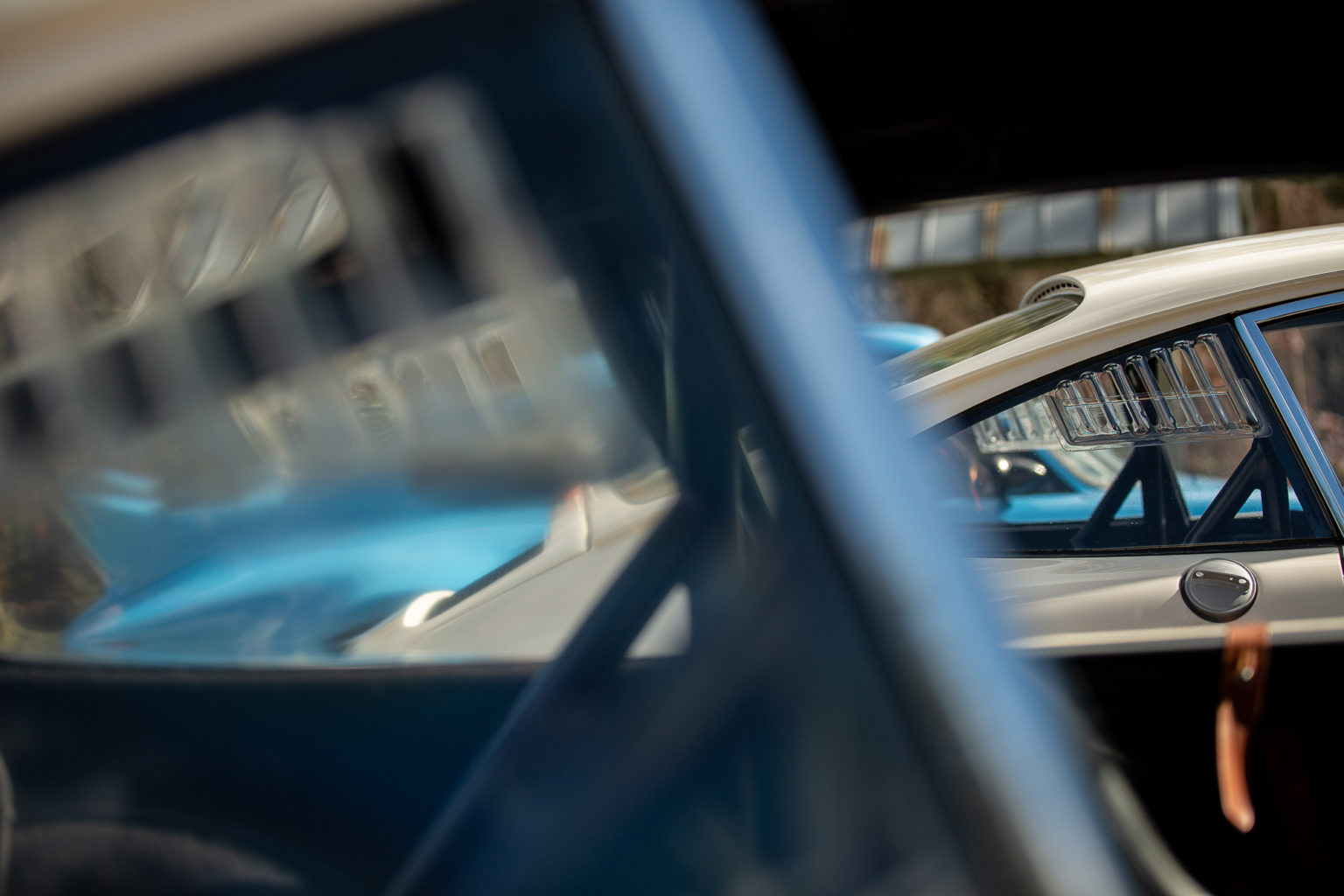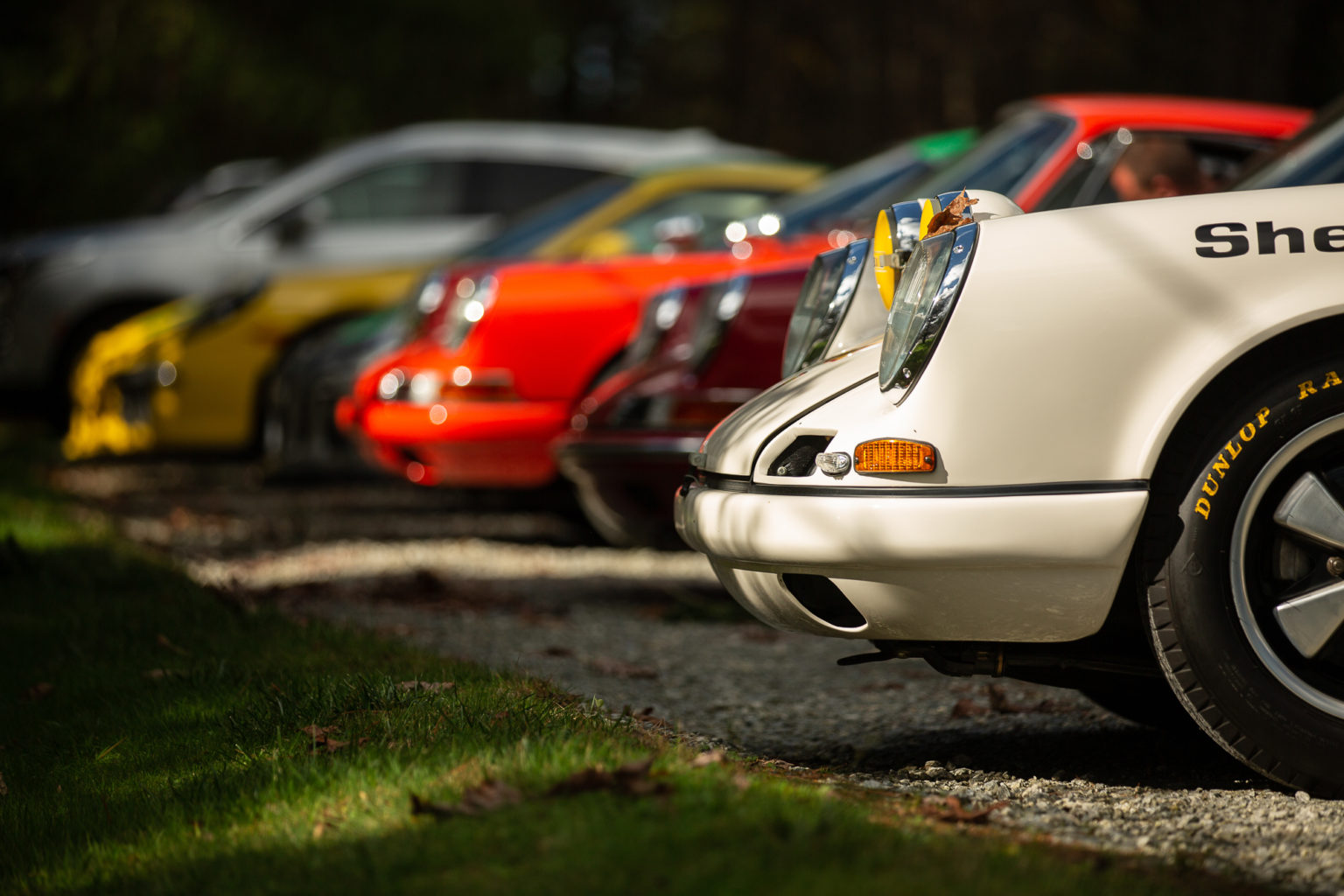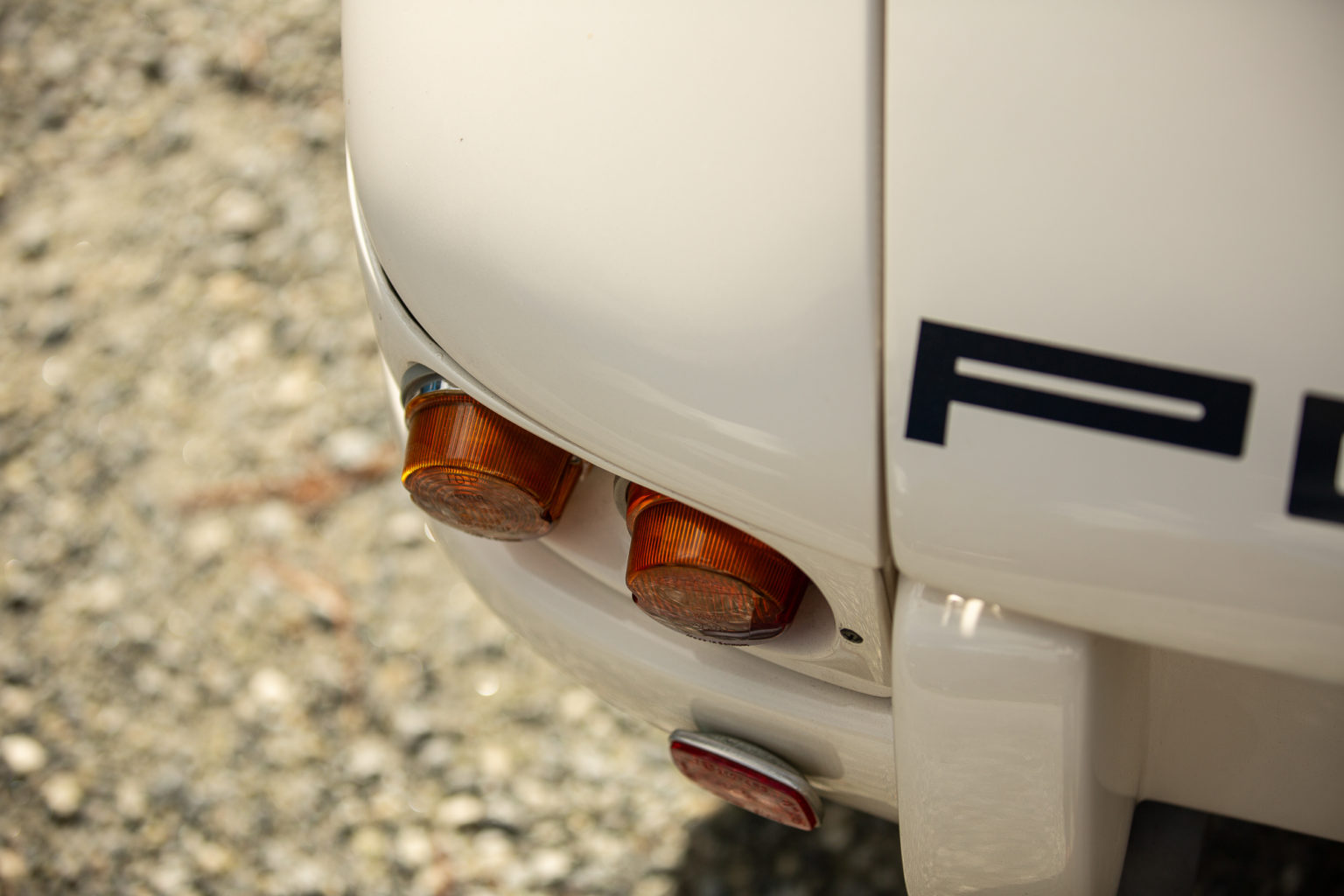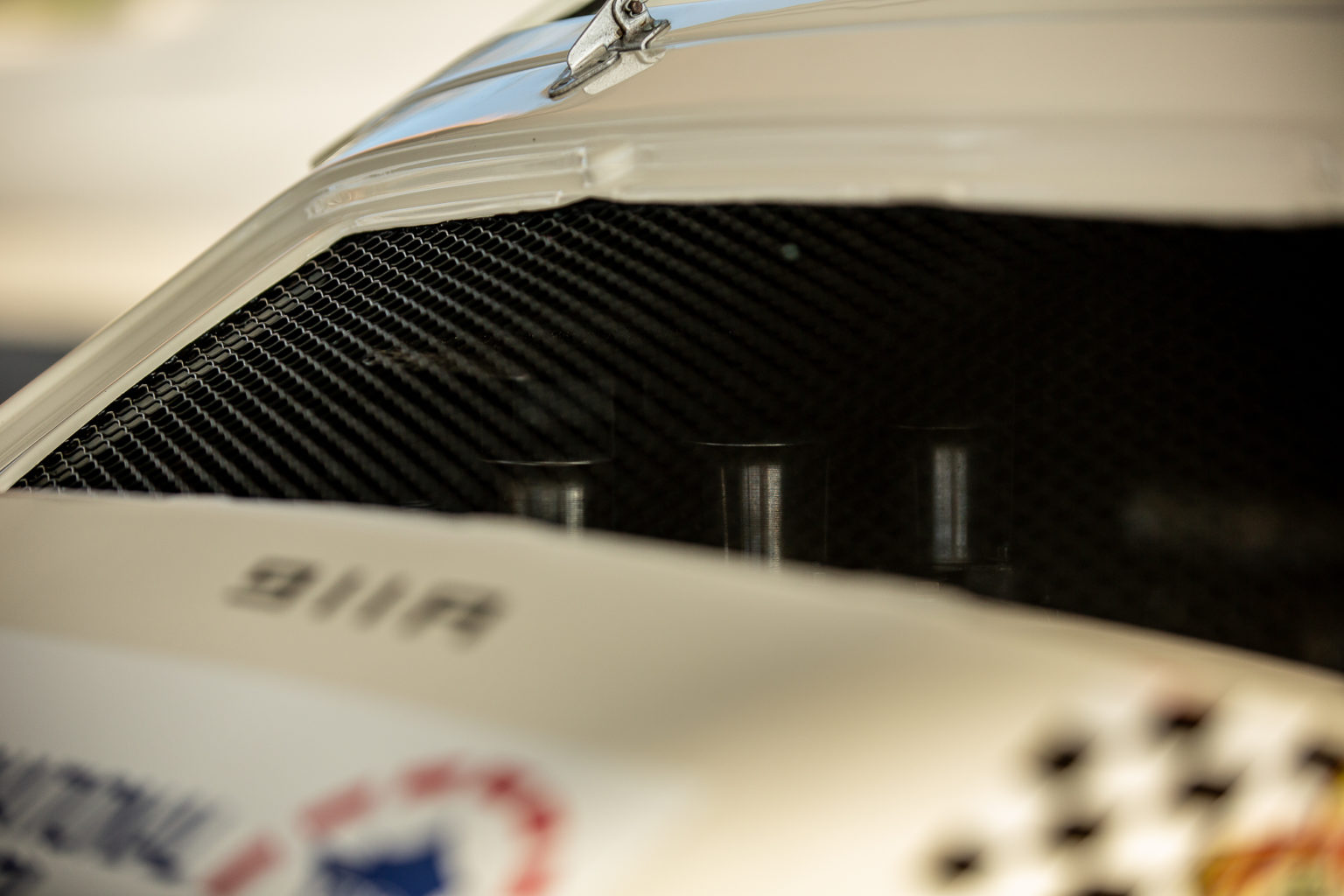Piëch to Peak had left us with a lingering buzz of adrenaline months after its conclusion. Of course, it wasn’t long before the participants began asking “What’s next?”. We began to brainstorm the possibilities of a driving experience here on the East Coast.
It was quickly made apparent that Covid made having a group of more than just a handful of people an unrealistic proposition, so through some deliberation, we eventually arrived on the decision to have a Piëch to Peak reunion of sorts. The Smokey Mountains are a treasure trove of twisting, undulating mountain roads through the canyons and alongside rivers and streams, so with the help of our friend Tate Askew we set routes for two days of driving. After numerous discussions on what would be best suited for those mountain roads, we landed on 911R and Sport Purpose 911s- both original and modern form.
Piëch’s 911R and the Sport Purpose 911s
The successes of privateers racing the 911 in the European Hill Climb championship and long-distance rallies planted the seed in the minds of 29-year-old Head of R&D Ferdinand Piëch, and Motorsports director Huschke von Hanstein to the possibility of developing a pure race car version of the 911. Huschke von Hanstein fell in love with the car and believed the company could sell 500 of them, a number that would have positioned it in FIA Group 4 classes where its victories were assured.
Marketing didn’t share his enthusiasm for road-going racing cars and they vetoed every proposal he made. None of that mattered to the car’s inventor though. Piëch used the 911R – for Rennsport – as a testbed for all the ideas he was developing for lightening, strengthening, and quickening the 911.
The first lightweight test car was built in 1966, and the data was promising after the first tests at the race track at Hockenheim- the 911R came in just 12 seconds behind the record time set by a 906 Carrera 6. In his typical fashion, he created four prototypes and this led to a “production run” of another 20 cars, assembled in the racing department, outside of the influence of Porsche’s sales staff and marketers.
The front lid, fenders doors and bumpers were all replaced with lightweight fiberglass reinforced polymer. The windscreen was fashioned from 4mm thick glass, and the remaining windows were 2mm thick plexiglas. The interior was stripped to bare bones, and then further scrutinized to determine what else could be removed in the pursuit of lightness. The usual five gauges were reduced to two, simple leather straps replaced the window cranks, sunvisors, cigarette lighters, and ashtrays were all discarded. Thanks to these extreme weight saving measures, the 911 R weighed just under 1765 lbs.
The 911R’s Typ 910/22 engine was derived from Porsche’s contemporary Typ 906 Carrera 6 endurance racer which itself grew out of the original 911 2-liter flat six. Using light-alloy cylinders, topped with aluminum alloy cylinder heads with twin chain-driven over-head camshafts per bank, the engines developed 210 horsepower at 8,000 rpm. The resulting power to weight ratio was 8.8 pounds per horsepower- 3.3 pounds less per hp than that of the competition. The unassuming 911R quickly became Porsche’s secret weapon between 1967 and 1969, and was one that would prove itself to be a force in competition with drivers like Vic Elford, Hans Herrmann, Jochen Neerpasch, Gérard Larrousse and Gerhard Mitter behind the wheel.
In 1968, Porsche developed a guide for its customers on how to build a 911 race car and order it from the factory. The guide was simply titled “Information regarding Porsche vehicles used for Sport Purposes.” The guide provided an overview of all the race options that could be ordered on the 911, 911L, 911T, and 911S models. These sports purpose ordered 911s were often referred to as Trans-Am cars in North America and Rally Kit cars in Europe. They were not as extreme as the 911Rs that preceded them, but as was the recipe for the success of the 911R, power to weight ratio and finessing the handling of the cars completely changed their feel and performance.
Modern models such as the 991.1 911R and the 991.2 GT3 Touring models draw inspiration from those 911 models of the late 1960s and package lighter weight with increased power for razor-sharp steering response and dynamic handling, and an extremely rewarding driving experience.
“Our cars are meant to be driven. Not polished. I wanted to build cars that were not something to everyone but meant everything to some” -Ferdinand Porsche
Rain was in the forecast for the entire week as a result of a tropical storm that moved up the coast, but nevertheless, the group remained optimistic. Once everyone had arrived, an informal cocktail hour and homemade dinner gave everyone the chance to catch up and the few first-time guests to get acquainted. Rain greeted us the following morning, so we decided to set off on the modern 911Rs and GT3 Touring for the first route. The skies opened up and torrential downpours lambasted the group for what felt like an hour, making the winding roadway slick with fallen leaves and bodies of standing water. Thankfully, the inclement weather subsided after lunch and just in time for the fastest and most technical portion of the route. The group 911s pushed on through the hairpins and banked turns carved into the edge of the mountainside before winding down and through the canyons, filling them with an orchestra of high revving 4.0-liter exhaust notes. Even with the Pilot Sport Cup 2 tires in the cold and wet conditions, the 911Rs and GT3 Touring’s perfect balance, wide track, and neutral handling allowed the drivers to push the pace throughout the route without any drama. Everyone arrived back at the house safely and grinning ear to ear, cars covered in bits of leaves and road grime, while the drivers discussed their favorite portions of the route and their newfound appreciation for the cars.
The following morning, the rain had slowed to little more than a drizzle, so the 8-Ball Trans-am 911 and the 911L were unloaded from one trailer, and 911R chassis 003 and 017 were unloaded from another. They rumbled up the hill and lined up next to the modern 911Rs, and together the convoy headed toward the mountains once again. The early cars led the group, snarling exhausts reverberating against the trees and embankments, eventually leading the modern cars so much that they often disappeared from the view of the fender-mounted mirrors. The short-wheelbase cars, paired with the narrower race compound tires were much more lively than their modern counterparts and occasionally slid on the wet leaves and painted road lines. After miles of twisty and damp sections heavily shaded by trees and brush, the group reached the Blue Ridge Parkway to clear skies and sunshine. We continued on until the sunset before returning back to the house, everyone elated and exhausted from the full day of tackling the winding roadways.
When compared side by side, the cars have very little in common. The modern 911s have grown to tremendous proportions, and it’s especially apparent when viewed alongside the 911s of the late 1960s. The 911Rs and Trans-am cars are stripped to only the essentials, whereas the modern 911s still retain all of the comfort equipment. It’s no secret that the early cars were built to race, while the modern 911R and GT3 Touring were built to be the best road car they could be. Where the two do find commonality is entirely in the driving experience. The revs climb and drop quickly due to the reduction of mass in the driveline, the sonorous mechanical and exhaust sounds fill the cabin due to the lack of interference from sound deadening, the shifts and turn-in are more direct and more precise than the standard models in the 911 lineup of the same year, and most of all it’s the connection between the car and driver that is the true component that makes these cars so intoxicating.




